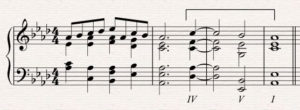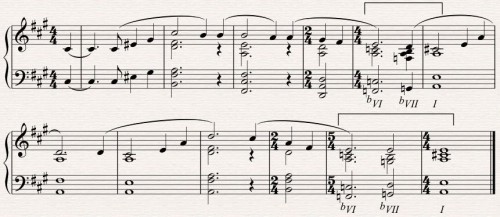Author: Stan
The Friendly Beasts
Canadian Supreme Court rules
The Canadian Supreme Court upheld the ruling that the 30 to 90 second previews in iTunes are not a public performance and do not require a copyright fee be paid to the music industry. They also ruled that the download of a game is not a public performance of the music in that game and doesn’t require a second payment. The court chastised the music industry for trying to double-dip. See the full story here.
A Modest Proposal
Came across this tongue-in-cheek proposal for “eternal copyright” discussing the “benefits”, implications, etc. The real purpose, of course, is to showcase how ridiculous the current copyright laws are.
You’ll find it at NEWSgrist.
Supreme Court Restores Copyright to Foreign Works
A good article, by Is That Legal, explaining the Supreme Court decision in Golan v. Holder, that congress has the right to restore copyright protection to foreign works that were previously in the public domain.
Read the article here.
How Copyright Extension is Harming Classical Music
The EU decided to retroactively extend copyright from 50 to 75 years, with no evidence that this was needed or useful. There has been very little discussion of the harm this causes, and what discussion there has been has focused on the world of rock and pop music. But it has an even more negative impact on classical music, especially old recordings of classical music.
See the theguardian article: the festival bubble and the music copyright extension.
more web site problems
Well I’m not having much luck. Today, I lost a router.
The short version is, as a result, the website was down for at least 4 hours that I’m sure of, maybe longer. I think I’ve got things cobbled together and everything appears to be working again, but this is sort of a temporary solution to keep me up and running. I’m going to have to give a long term solution some thought.
New bill makes unauthorized streaming a felony
Late last week, Senators Amy Klobuchar (D-MN) and John Cornyn (R-TX) introduced a bill that would make the unauthorized streaming of copyrighted material a felony.
Under current law, “reproducing” and “distributing” copyrighted works are felony charges and covered under peer-to-peer transfers and Web downloads. But streaming has been considered “public performance” rather than “distribution” – and holding a public performance without a proper license is not a felony. This bill, S. 978, adds “public performance” to the list of felonies.
Online streamers can now face up to 5 years in prison and a fine in cases where:
- They show 10 or more “public performances” by electronic means in any 180-day period and
- The total retail value of those performances tops $2500 or the cost of licensing such performances is greater than $5000
William and Kate and harmony
So this is a post about William and Kate’s wedding you aren’t likely to see anywhere else.
If you saw William and Kate’s wedding (and who didn’t?) you heard some very nice music.
One piece you heard was John Rutter’s “This is the Day”, written especially for the service.
Fairly traditional, but with some nice little twists that made it just a bit different, just a bit more contemporary. Just what was it that gave it that slightly modern flavor?
First, let’s look at a standard final chord progression (click on the scores to listen):

The first bar doesn’t matter. The idea is that some key is already established, in this case, Ab Major. The bracketed part is what is important. Also, the chord symbols are simplified, I’m only indicating the root motion and the basic chord quality. So the above is pretty standard fair, found in a lot of hymns and songs.
A slightly stronger version sounds like this:

The other day, I was listening to British composer Malcolm Williamson. Here’s what he did in one of his anthems:

Really nice. He’s dipping into Ab minor for a moment here. The V, Eb Major, is shared; it exists in both Ab harmonic minor and Ab Major and sort of bridges between the two.
Notice the root motion: a Major 2nd up ( iv -> V), followed by the traditional 5th down ( V -> I). That’s one of the ways you can tell it’s not my work. I tend to reverse those two motions, avoiding the traditional motion at the end. Like this:

So the 5th downward comes first ( iv -> bVII ), then the Major 2nd up ( bVII -> I ). The dip into Ab minor is firmly established as natural minor by the bVII, then the reversal back to major at the end (no ‘bridge’ needed!).
So now we’re ready to talk about John Rutter’s “This is the Day”. Of course, I haven’t seen the score, but I think I heard the essential harmonies correctly. At the end, a lesser composer would have written:

Again, the cadences in question are in brackets. Above, we have all 5th-down root motion: ii – V – I. Perfectly fine, but traditional enough to border on the trite. Below is what Rutter actually did:

All Major-second-up root motion. Makes a big difference doesn’t it? This is one of my favorite cadences. I use it all the time, and it works in many contexts. Traditional, yet modern at the same time.
So now you know.
RIAA: LimeWire owes $75 trillion
The music industry thinks LimeWire should pay $75 trillion in damages for their copyright infringement claim. The judge in the case, Judge Kimba Wood, has called this request “absurd”.
The current US GDP is about 14 trillion, less than 1/5th the damages requested. In fact, the GDP of the entire world is somewhere between $59 and $62 trillion in US dollars. So the RIAA (Recording Industry Association of America) is, to quote Judge Wood, “suggesting an award that is more money that the entire music recording industry has made since Edison’s invention of the phonograph in 1877.”